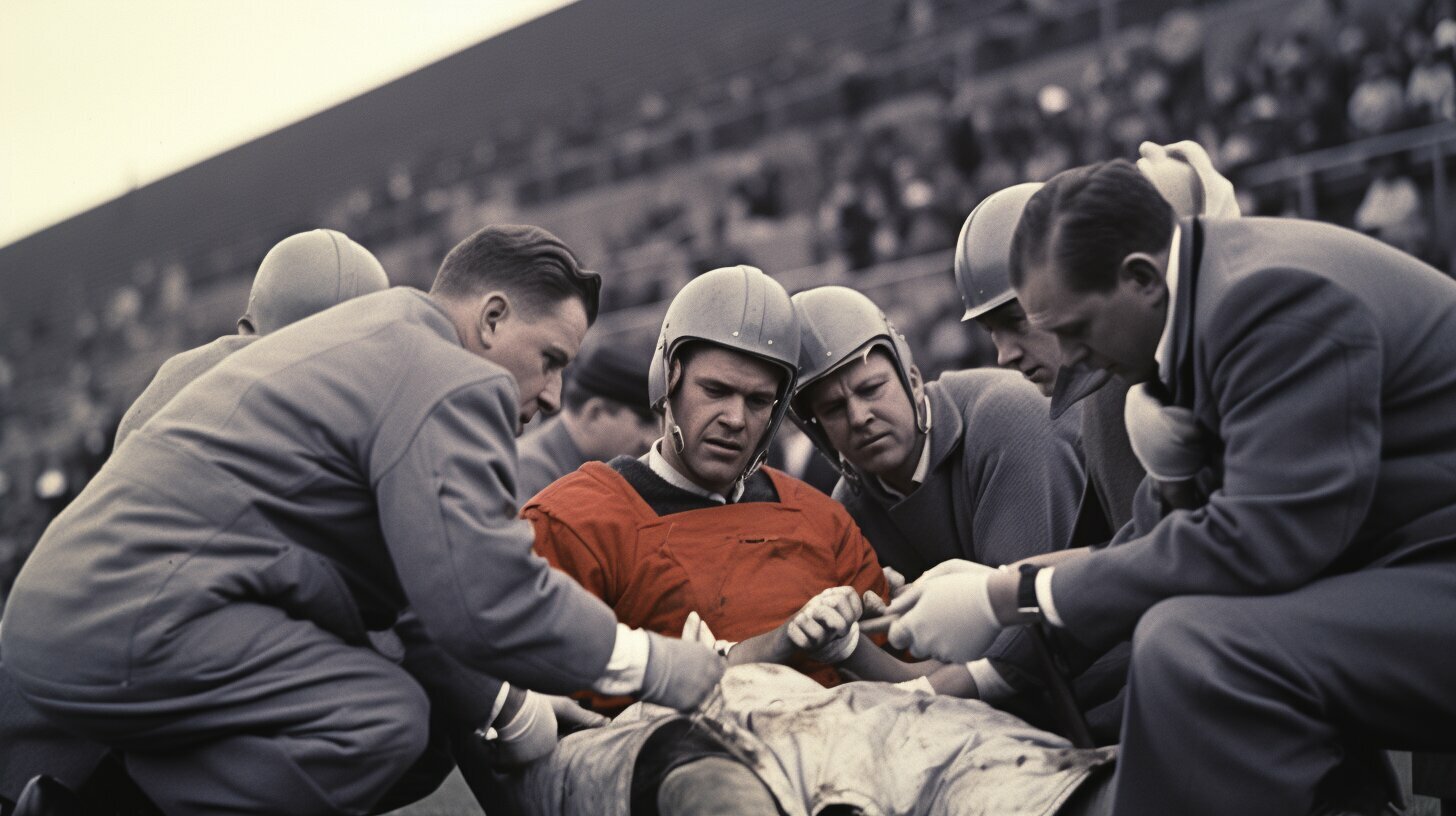First aid equipment plays a vital role in promoting a culture of safety in football communities, but there is a lack of sufficient first aid kits on youth football fields. Many of these kits are inadequately equipped, leaving players vulnerable to potential injuries. This presents a significant concern, considering the common occurrence of contusions and sprains in youth football. To ensure the well-being of players, it has been suggested that a scientifically-based first aid kit, costing £90, would be necessary to treat all youth football injuries effectively.
Coaches in youth teams also play a crucial role in providing immediate medical assistance to injured players. Therefore, it is essential for coaches to receive education in first aid management. Additionally, it is recommended that coaches have their own personal first aid kits readily available. This will enable them to be prepared for a wide range of injuries, including cuts, scrapes, and more serious wounds.
The NFL has been proactive in addressing head injuries and enhancing player safety. The league has invested in medical research and engineering advancements to protect the health and well-being of players. Initiatives such as implementing concussion protocols and enforcing strict measures have been put in place to prevent and treat head injuries effectively.
Furthermore, advanced technology, including engineering and biomechanics, is being utilized to prevent injuries in contact and recreational sports. These technological advancements aim to mitigate forces and promote safer gameplay.
It is evident that first aid kits play a crucial role in contact sports like football. Immediate medical attention and the availability of necessary supplies are vital for treating injuries on the field. To create a safer football community, it is imperative to prioritize proper first aid equipment, education, and awareness. Through collective efforts, we can ensure the safety and well-being of players, both now and in the future.
The Importance of Well-Equipped First Aid Kits
Injuries such as contusions and sprains of the lower extremity are common in youth football, highlighting the importance of well-equipped first aid kits. When accidents happen on the field, having the necessary supplies readily available can make a significant difference in providing immediate and effective medical care. Well-equipped first aid kits are essential in promoting the safety of players in football communities.
A well-stocked first aid kit should include items such as bandages, adhesive tape, wound dressings, antiseptic solutions, ice packs, and disposable gloves. These supplies can help in treating a range of injuries, from minor cuts and scrapes to more serious wounds. With the proper equipment at hand, coaches and medical personnel can promptly address injuries, reducing the risk of further complications and ensuring the well-being of players.
Additionally, well-equipped first aid kits not only aid in immediate injury management but also promote a culture of safety. When players see that their coaches and teams prioritize their well-being by having proper first aid supplies, it sends a powerful message about the importance of safety. This, in turn, encourages players to take precautions and follow guidelines to prevent injuries on and off the field.
Creating a culture of safety in football communities starts with having well-equipped first aid kits readily accessible. By investing in proper equipment and ensuring its availability at practices, games, and tournaments, football communities can demonstrate their commitment to player safety and set a positive example for young athletes. Prioritizing the promotion of safety through well-equipped first aid kits is a crucial step towards creating a safer football community for all.

| Benefits of Well-Equipped First Aid Kits: |
|---|
| 1. Prompt and effective injury management |
| 2. Reduction of further complications |
| 3. Promotion of a culture of safety |
| 4. Encouragement of precautions and adherence to safety guidelines |
| 5. Setting a positive example for young athletes |
The Cost of Adequate First Aid Kits
First aid equipment plays a vital role in promoting a culture of safety in football communities. However, there is a lack of sufficient first aid kits on youth football fields, with many of them being inadequately equipped. Injuries such as contusions and sprains of the lower extremity are common in youth football.
It has been suggested that a scientifically-based first aid kit costing £90 would be sufficient to treat all youth football injuries, emphasizing the affordability of adequate equipment. This proposed kit would include essential supplies such as bandages, adhesive tape, antiseptic solution, sterile gauze, and instant cold packs. By providing these essential items, football communities can ensure prompt and effective treatment for common injuries.
Investing in well-equipped first aid kits not only enhances the safety of players but also demonstrates a commitment to their well-being. By prioritizing the provision of adequate first aid equipment, football communities can create an environment that emphasizes player safety and promotes a culture of care. Moreover, it is important to regularly inspect and replenish first aid kits to ensure that they remain fully stocked and ready for use.
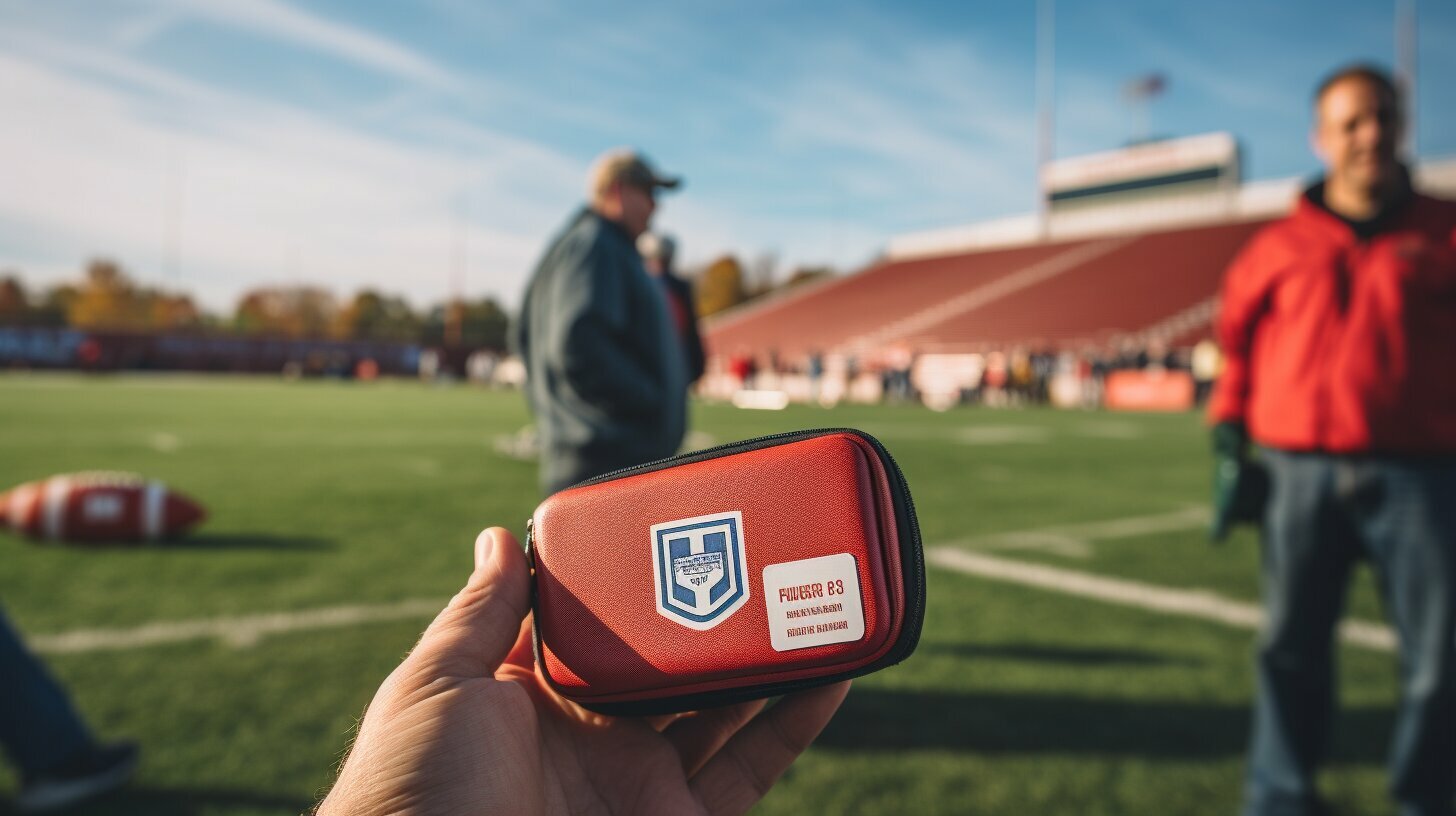
| Item | Quantity | Cost (GBP) |
|---|---|---|
| Bandages | 10 | 15 |
| Adhesive Tape | 3 | 10 |
| Antiseptic Solution | 1 | 12 |
| Sterile Gauze | 20 | 18 |
| Instant Cold Packs | 5 | 35 |
| Total Cost | 90 | |
Education in First Aid Management for Coaches
Coaches in youth teams should also receive education in first aid management, enabling them to provide immediate medical assistance when necessary. In the fast-paced and physically demanding environment of football, injuries are bound to occur. By equipping coaches with the knowledge and skills to handle common injuries, such as sprains, fractures, and cuts, they can effectively administer first aid on the field.
Through dedicated courses and training programs, coaches can learn how to assess injuries, stabilize fractures, control bleeding, and provide necessary care until professional medical help arrives. Additionally, they can gain insight into injury prevention techniques and strategies to create a safer playing environment for their teams.
Having coaches trained in first aid management not only benefits the players but also instills confidence within the football community. Parents and guardians can feel reassured knowing that their children are in the hands of coaches who are well-prepared to handle injuries and emergencies.
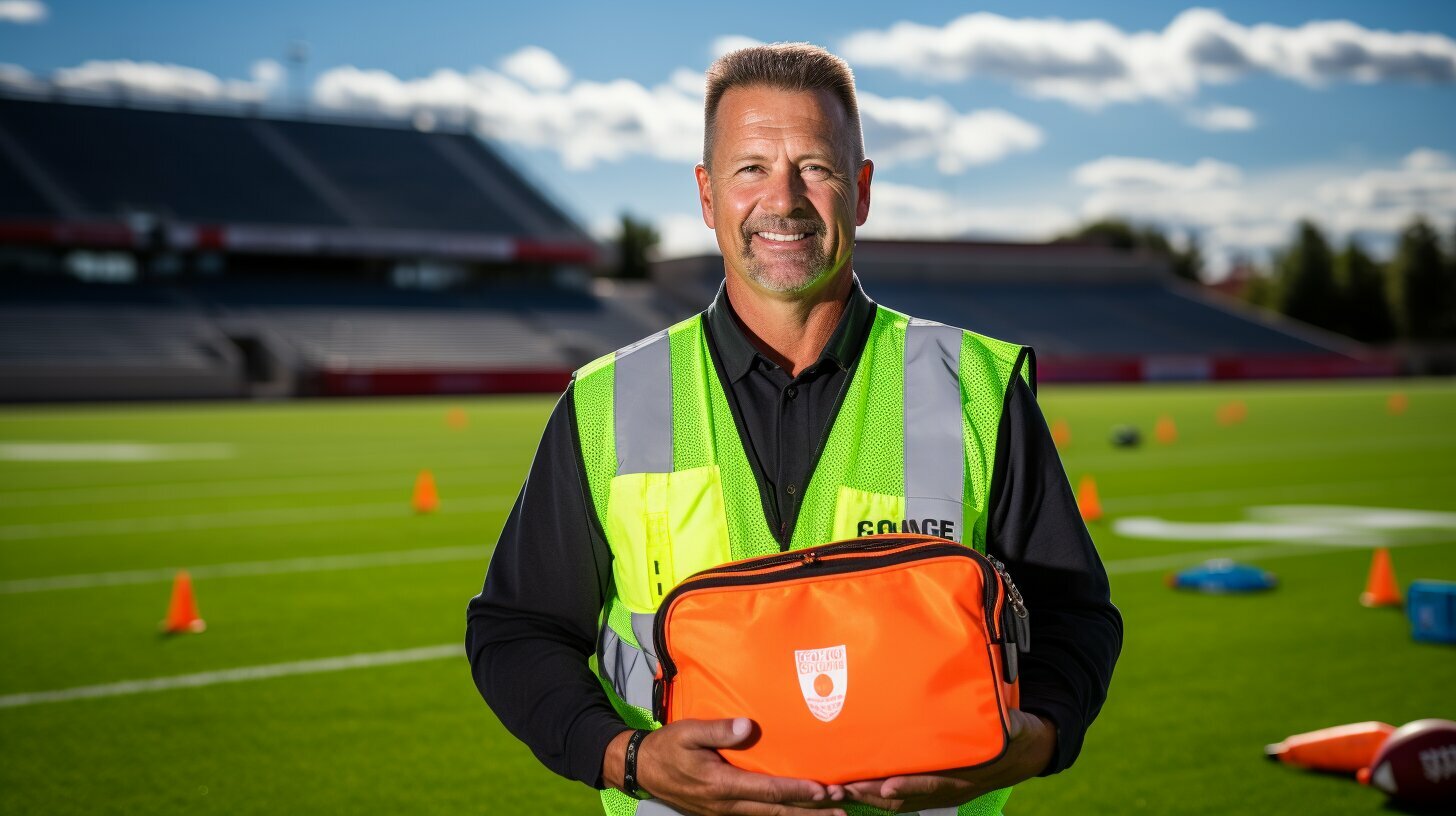
Coaches’ Personal First Aid Kits
Having a coach’s own first aid kit handy is recommended to be prepared for a wide range of injuries, including cuts, scrapes, and more serious ones. Coaches play a crucial role in ensuring the safety and well-being of players, and having the necessary supplies readily available is essential for immediate medical attention.
Coaches’ personal first aid kits should include items such as adhesive bandages, antiseptic wipes, sterile gauze pads, adhesive tape, disposable gloves, and instant cold packs. These items can effectively treat common injuries that occur on the football field. It is important for coaches to have the knowledge and resources to handle both minor and potentially more severe injuries until professional medical help arrives.
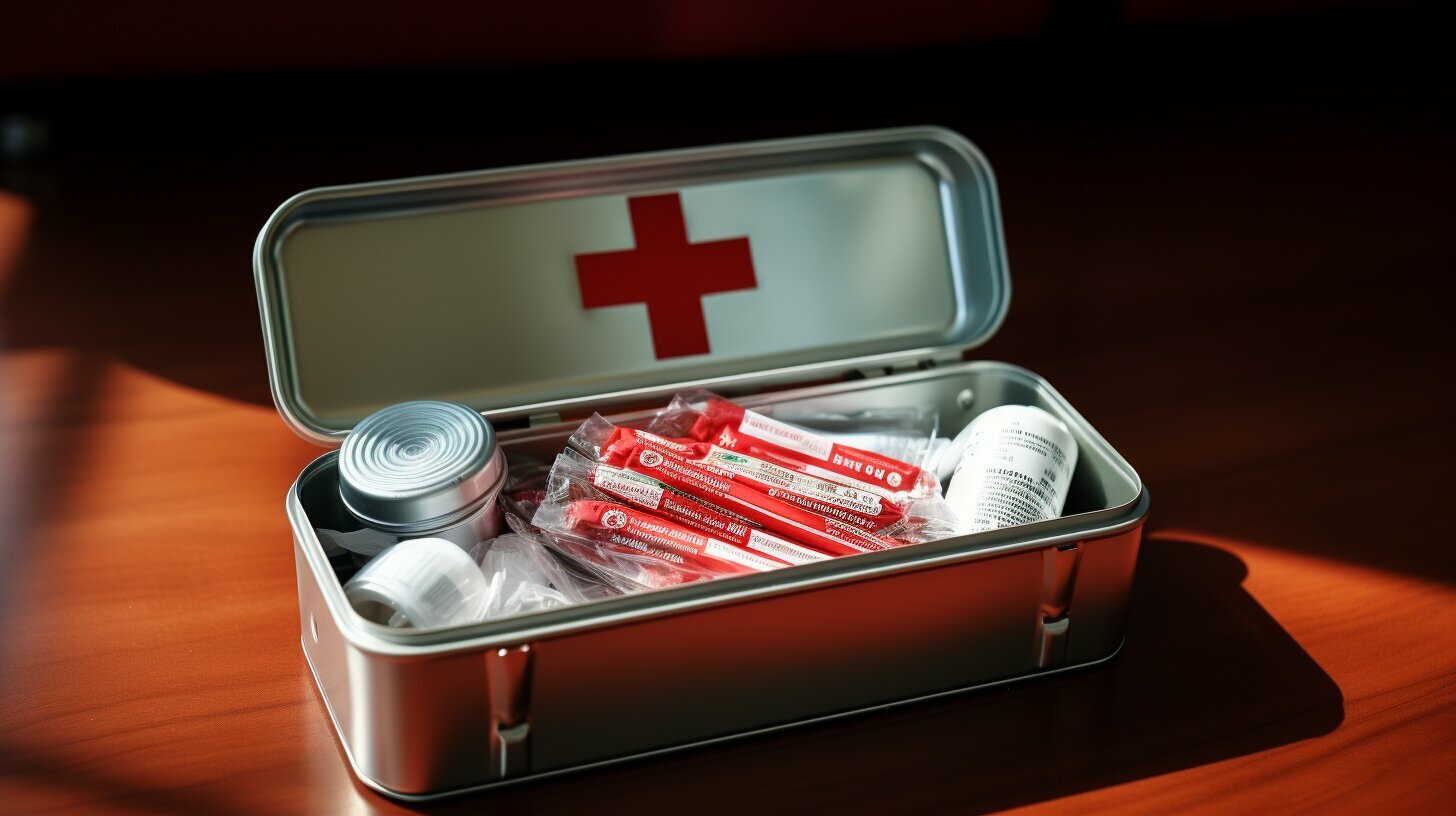
Coaches’ Personal First Aid Kit Checklist:
- Adhesive bandages of various sizes
- Antiseptic wipes or solution
- Sterile gauze pads
- Adhesive tape
- Disposable gloves
- Instant cold packs
- Tweezers
- Scissors
- Elastic bandages
- Pain relief medication
| Item | Quantity |
|---|---|
| Adhesive bandages | 10 |
| Antiseptic wipes | 10 |
| Sterile gauze pads | 5 |
| Adhesive tape | 1 roll |
| Disposable gloves | 5 pairs |
| Instant cold packs | 2 |
| Tweezers | 1 |
| Scissors | 1 |
| Elastic bandages | 2 |
| Pain relief medication | 1 bottle |
By having their own personal first aid kits, coaches can respond promptly to injuries and provide immediate care to players. This proactive approach not only enhances the safety of football communities but also instills a sense of confidence and reassurance among players and their families.
The NFL’s Efforts in Player Safety
The NFL is taking steps to address head injuries and improve player safety through initiatives such as investing in medical research and engineering advancements. The league is committed to making changes on and off the field to protect the health and safety of players.
One of the key areas of focus for the NFL is concussion protocols. The league has implemented and enforces strict protocols to prevent and treat head injuries. These protocols ensure that players receive immediate medical attention and follow a standardized process for evaluation and recovery.
In addition to concussion protocols, the NFL is also investing in advanced technology to improve player safety. From engineering advancements to biomechanics, the league is utilizing advanced techniques to mitigate forces and prevent injuries in contact and recreational sports.
Player Safety Initiatives:
- Investing in medical research
- Implementing and enforcing concussion protocols
- Utilizing advanced technology for injury prevention

The NFL’s commitment to player safety is evident through its investments in research, implementation of concussion protocols, and utilization of advanced technology. By prioritizing the well-being of players, the league is leading the way in promoting a culture of safety in football communities.
| Player Safety Initiatives | Description |
|---|---|
| Investing in medical research | Funding scientific studies to better understand and prevent injuries |
| Concussion protocols | Implementing strict guidelines to prevent and treat head injuries |
| Advanced technology | Utilizing engineering and biomechanics to minimize injury risks |
Concussion Protocols in Football
The league is committed to making changes on and off the field to protect the health and safety of players, including implementing concussion protocols and enforcing them. Concussions are a serious concern in football, and it’s crucial to have measures in place to prevent and treat these head injuries. The NFL has taken significant steps to address this issue, ensuring that players receive immediate medical attention and appropriate care.
Concussion protocols involve a series of assessments and guidelines that help identify and manage concussions in players. These protocols ensure that players suspected of having a concussion are evaluated by medical professionals before being allowed to return to play. The NFL has set strict guidelines for concussion management, including mandatory baseline testing and thorough evaluations conducted by independent medical personnel.
By implementing and enforcing these concussion protocols, the NFL aims to protect the well-being of players. These measures prioritize player safety and provide the necessary support for those who have suffered head injuries during games. The league’s commitment to implementing concussion protocols represents a significant advancement in football safety and sets a standard for other sports organizations to follow.

| Protocol Stage | Procedure |
|---|---|
| Pre-game | Baseline testing for all players to establish cognitive and physical performance benchmarks. |
| During the game | If a player exhibits symptoms of a concussion, they must be immediately removed from the game and evaluated by medical professionals. |
| Post-game | Comprehensive evaluation by independent medical personnel to determine the severity of the concussion and develop an appropriate treatment plan. |
| Return-to-play | Players must pass a series of tests and assessments, including a complete resolution of symptoms, before being cleared to return to game action. |
Concussion protocols are an essential aspect of football safety, ensuring that players receive the necessary care and support when head injuries occur. These measures prioritize player well-being, contributing to a safer and more responsible football community.
Advanced Technology in Injury Prevention
Advanced technology, such as engineering and biomechanics, is being championed to mitigate forces and prevent injuries in contact and recreational sports. With constant advancements in these fields, an array of innovative solutions is emerging to enhance safety on and off the field.
One notable example is the development of impact-absorbing materials and equipment. These materials are designed to reduce the impact of collisions and falls, minimizing the risk of injuries. From shock-absorbing helmets to protective padding, these advancements provide added protection to athletes, particularly in high-impact sports like football.
Furthermore, the integration of sensors and data analysis has revolutionized injury prevention and management. These technologies can track an athlete’s movements, identify patterns, and detect potential risks. By analyzing data, coaches and medical professionals can make informed decisions regarding training techniques, playing strategies, and injury prevention protocols.
| Advancements in Technology | Benefits |
|---|---|
| Biomechanical modeling and simulation | A better understanding of injury mechanisms, leading to targeted preventive measures |
| Virtual reality training | Enhanced athlete preparedness in controlled, realistic scenarios |
| Smart fabrics and wearables | Real-time monitoring of physiological variables and injury risk factors |
The application of advanced technology in injury prevention also extends to the design of sports facilities. Engineering advancements have resulted in the development of impact-absorbing surfaces and state-of-the-art turf systems. These surfaces can reduce the risk of common football injuries by providing more forgiving playing conditions that minimize the impact on joints and muscles.
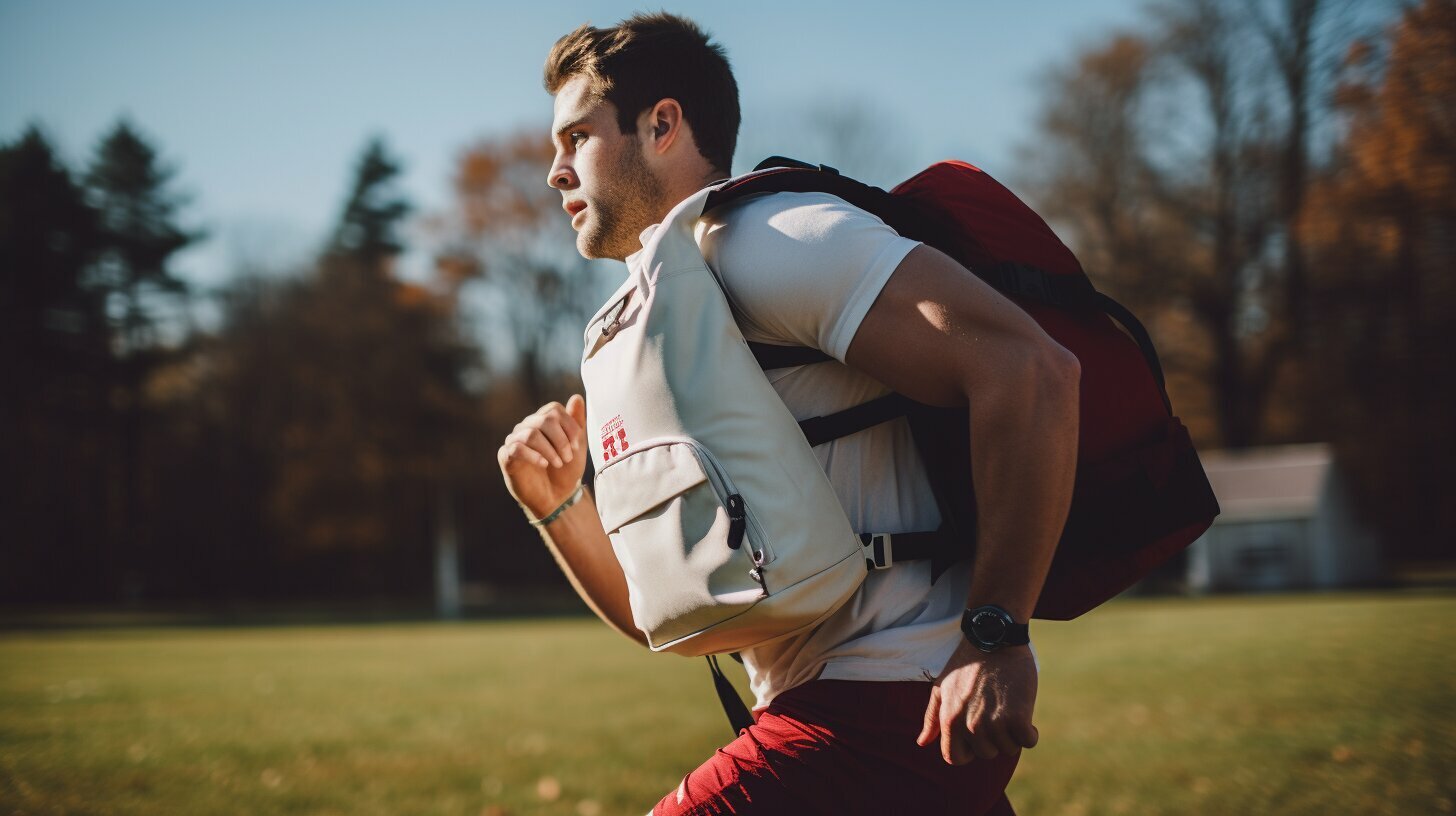
By harnessing the power of advanced technology, sports organizations and communities can create safer environments for athletes to thrive. Through ongoing research, innovation, and collaboration, the future of injury prevention looks promising as we continue to prioritize the well-being and safety of athletes in all sporting endeavors.
The Role of First Aid Kits in Contact Sports
First aid kits play a vital role in providing immediate medical attention and treating injuries in contact sports like football. In youth football communities, where the risk of injuries is higher, it is crucial to have well-equipped first aid kits readily available on the field. Unfortunately, many youth football fields lack sufficient first aid kits, leaving players vulnerable to inadequate treatment.
Common injuries in youth football, such as contusions and sprains of the lower extremity, require prompt and proper care. To ensure the safety of young players, it has been suggested that a scientifically-based first aid kit costing £90 would be sufficient to treat all youth football injuries. Such a kit should contain essential supplies like bandages, disinfectants, ice packs, and other items necessary for immediate treatment.
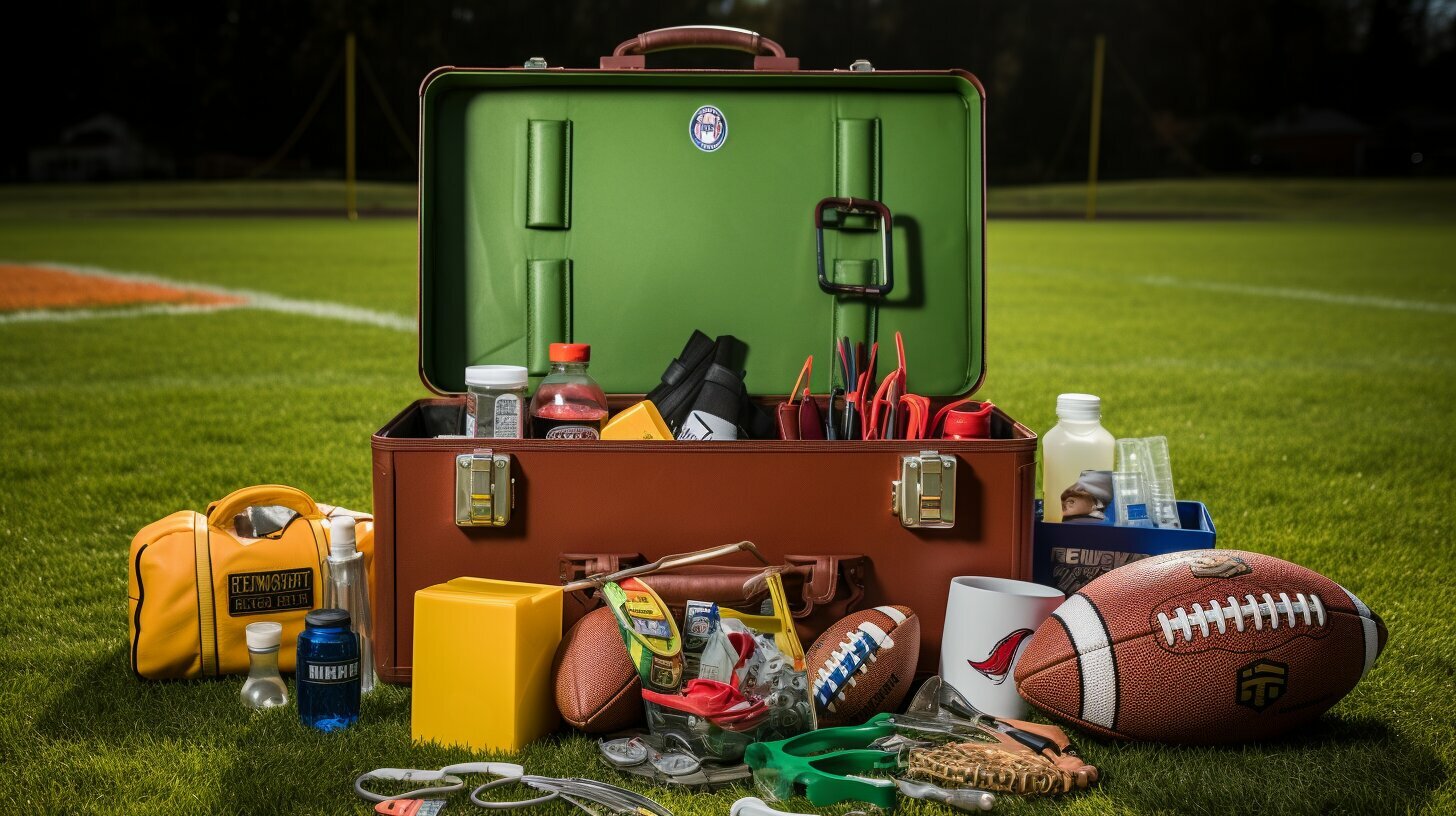
Coaches in youth teams also play a crucial role in providing immediate medical assistance to injured players. To be prepared for a wide range of injuries, it is recommended that coaches have their own personal first aid kits. These kits should include additional supplies like wound dressings, antiseptic creams, and splints to address cuts, scrapes, and more serious injuries on the field.
Recognizing the importance of player safety, professional leagues like the NFL are taking significant steps to address head injuries and enhance player protection. The NFL has invested in medical research and engineering advancements to improve safety equipment and protocols. This commitment to player safety includes implementing concussion protocols and enforcing them to prevent and treat head injuries effectively.
Furthermore, advanced technology, such as engineering and biomechanics, is being harnessed to prevent injuries in contact and recreational sports. Scientists and researchers are continuously working on developing innovative solutions to mitigate forces and create a safer playing environment for athletes. These advancements not only benefit professional athletes but also trickle down to community-level sports, promoting a culture of safety and well-being for all participants.
Creating a Safer Football Community
By prioritizing proper first aid equipment, education, and awareness, football communities can come together to create a safer environment for players. First aid equipment plays a vital role in promoting a culture of safety in football communities. However, there is a lack of sufficient first aid kits on youth football fields, with many of them being inadequately equipped. Injuries such as contusions and sprains of the lower extremities are common in youth football, and it is essential to have well-equipped first aid kits that can effectively treat these injuries.
It has been suggested that a scientifically-based first aid kit costing £90 would be sufficient to treat all youth football injuries. This cost-effective solution would ensure that football communities have the necessary supplies to provide immediate medical attention on the field. In addition to proper first aid equipment, coaches in youth teams should also receive education in first aid management. Equipping coaches with the knowledge and skills to provide immediate medical assistance can significantly reduce the impact of injuries and promote the safety of players.
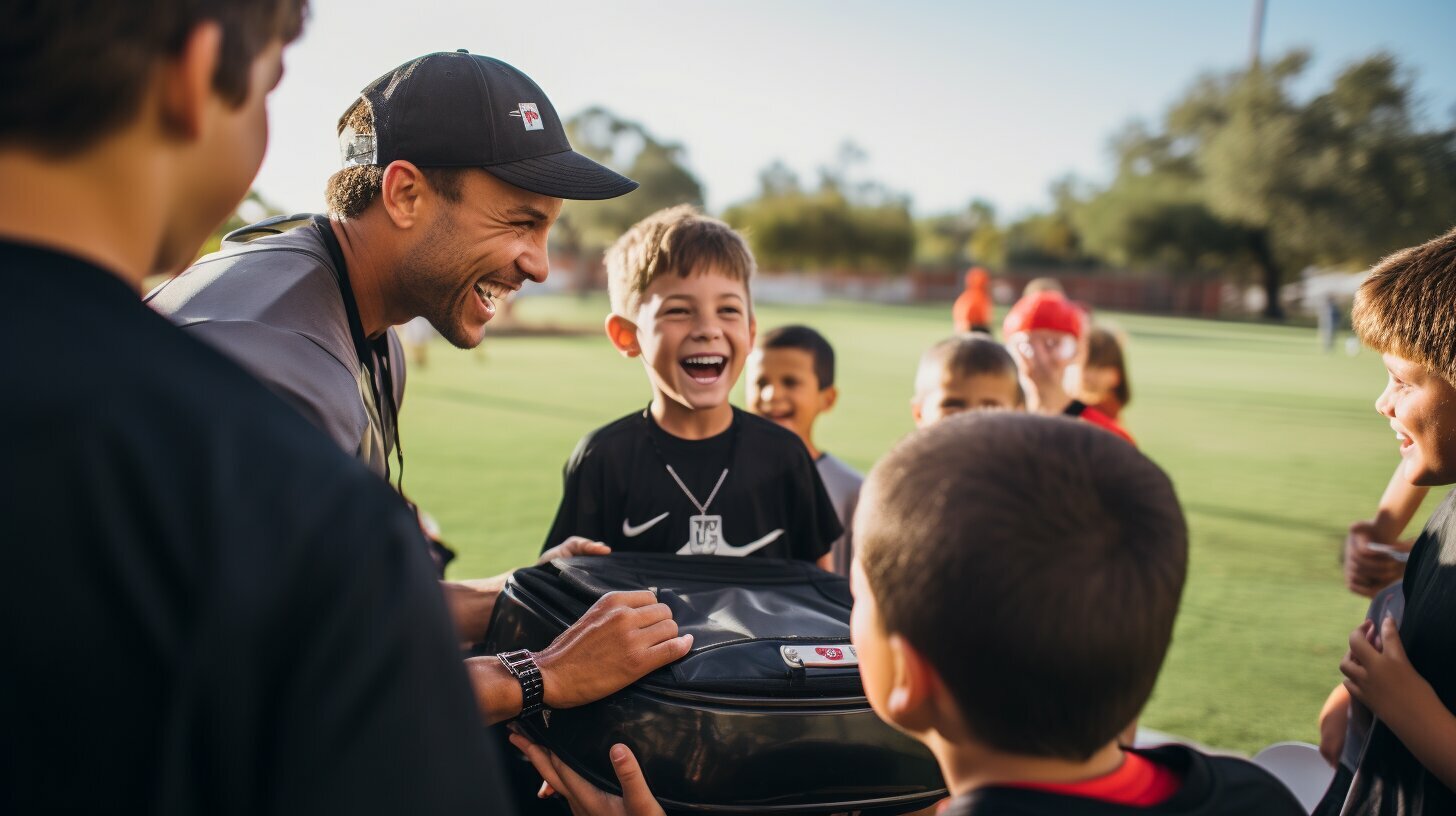
To further enhance safety measures, coaches should have their own personal first aid kits. These kits should be stocked with essential supplies to treat a wide range of injuries, including cuts, scrapes, and more serious ones that may occur during training or games. By having coaches prepared for any situation, football communities can ensure that players receive prompt and appropriate medical care, reducing the risk of complications and improving overall player well-being.
Inspired by the efforts of professional football leagues, such as the NFL, football communities can strive to implement similar protocols and safety measures. The NFL has been proactive in addressing head injuries and improving player safety through investments in medical research and engineering advancements. By applying lessons learned from such initiatives, football communities can continuously evolve to prevent and treat injuries effectively, safeguarding the health and safety of players at all levels of the sport.
The Future of Football Safety
With ongoing advancements in technology, research, and education, the future of football safety holds great potential for further improvements. As the understanding of injuries and their prevention continues to evolve, football communities can expect to see significant advancements in equipment, protocols, and overall player safety.
One area that shows promise is the development of advanced technology, such as engineering and biomechanics, aimed at mitigating forces and reducing the risk of injuries in contact and recreational sports. By applying scientific principles and innovative design concepts, engineers and researchers are working towards creating safer playing environments.
Another important aspect of the future of football safety is the continued emphasis on education. Coaches, players, and even parents are being encouraged to learn more about injury prevention, first aid, and proper techniques. By equipping individuals with the knowledge and tools to recognize and respond to injuries effectively, the overall safety of football communities can be greatly enhanced.
In summary, with ongoing advancements in technology, research, and education, the future of football safety looks promising. By leveraging innovative technologies, investing in research, and focusing on education, football communities can create a safer environment for players of all ages. It is an exciting time for the sport as efforts are being made to prevent and treat injuries more effectively, ensuring the long-term well-being of all participants.
Conclusion
In conclusion, first aid kits play a crucial role in promoting a culture of safety in football communities, and it is essential to prioritize adequate equipment, education, and proactive measures to ensure the well-being of players.
Unfortunately, there is a concerning lack of sufficient first aid kits on youth football fields, leaving many of them inadequately equipped to handle common injuries such as contusions and sprains of the lower extremity. To address this issue, it has been suggested that a scientifically-based first aid kit costing £90 would be sufficient to treat all youth football injuries, providing the necessary supplies for immediate medical attention.
Furthermore, coaches in youth teams should receive proper education in first aid management to be able to provide immediate medical assistance to injured players. It is recommended that coaches have their own personal first aid kits, prepared to handle a wide range of injuries, including cuts, scrapes, and more serious ones, ensuring the safety and well-being of their team.
The NFL, as a leading authority in football, is taking commendable steps to address head injuries and improve player safety. The league has invested in medical research and engineering advancements to protect the health and safety of players. Initiatives such as implementing and enforcing concussion protocols demonstrate the NFL’s commitment to preventing and treating head injuries effectively.
Moreover, the use of advanced technology, particularly in fields like engineering and biomechanics, is being championed to mitigate forces and prevent injuries in contact and recreational sports. These advancements aim to promote safer gameplay and reduce the risk of injuries, contributing to a culture of safety in football communities.
By prioritizing adequate first aid equipment, education, and proactive measures, we can create a safer football community where the well-being of players is paramount. It is essential for all stakeholders, including football organizations, coaches, and players, to work together towards this common goal, ensuring the health and safety of everyone involved in the game. Only through collective efforts can we build a brighter and safer future for football.
